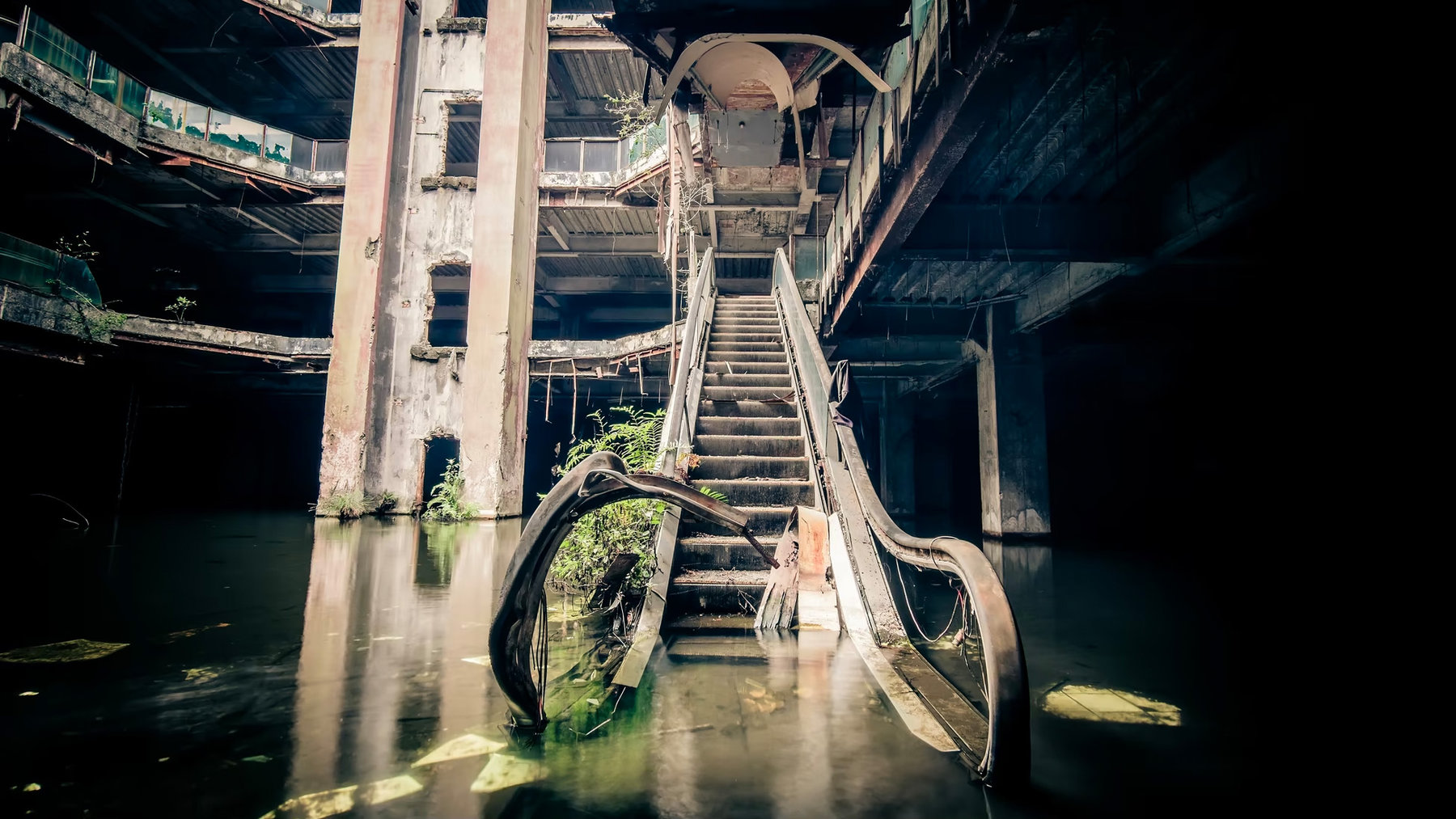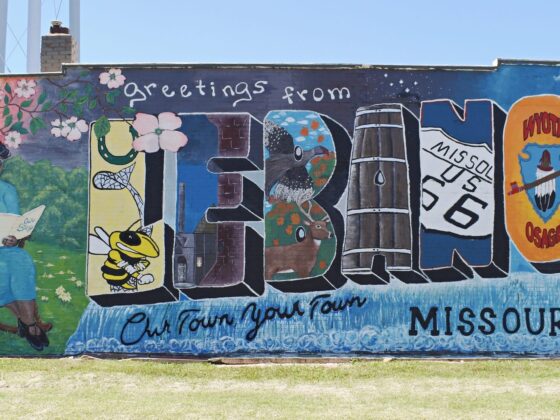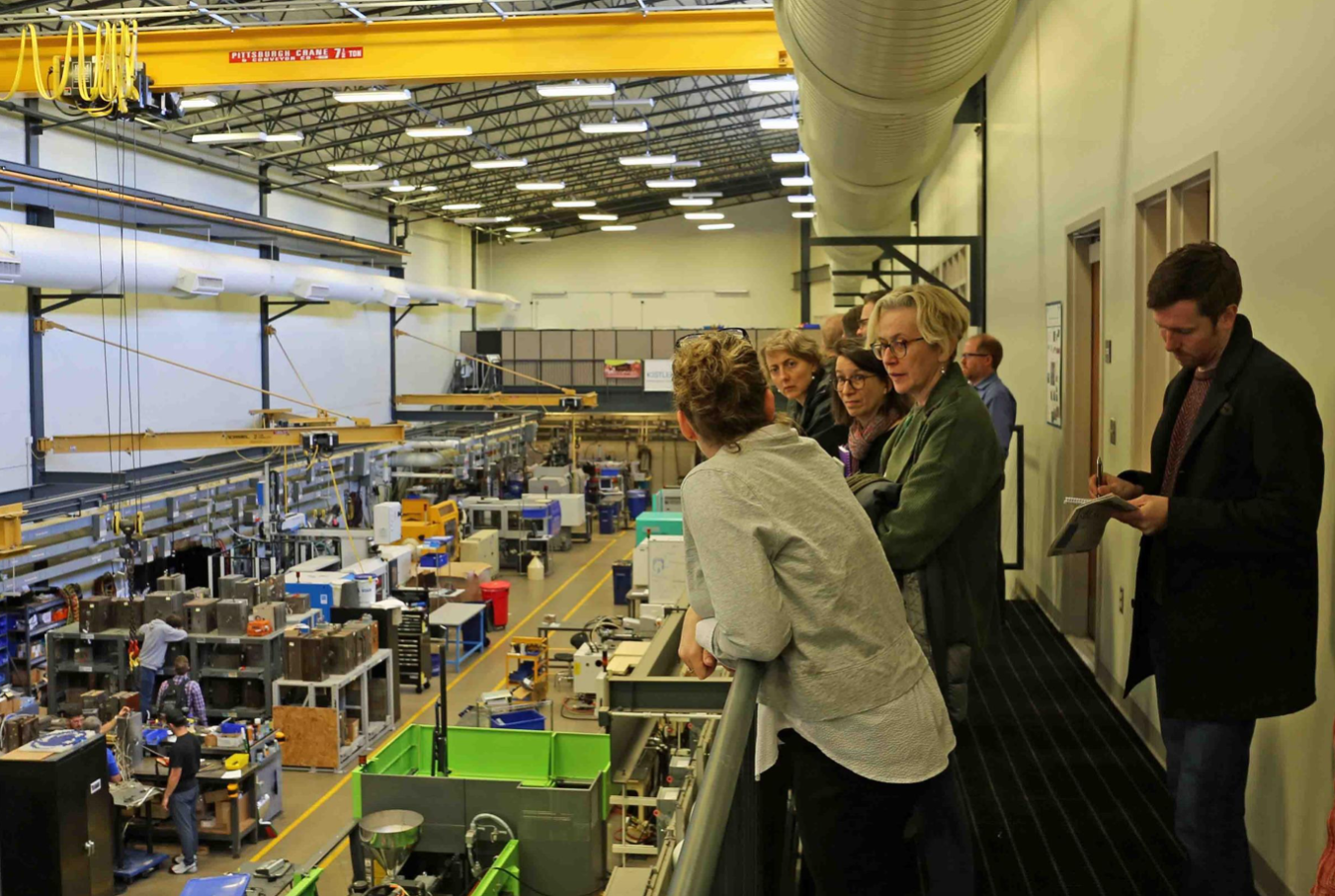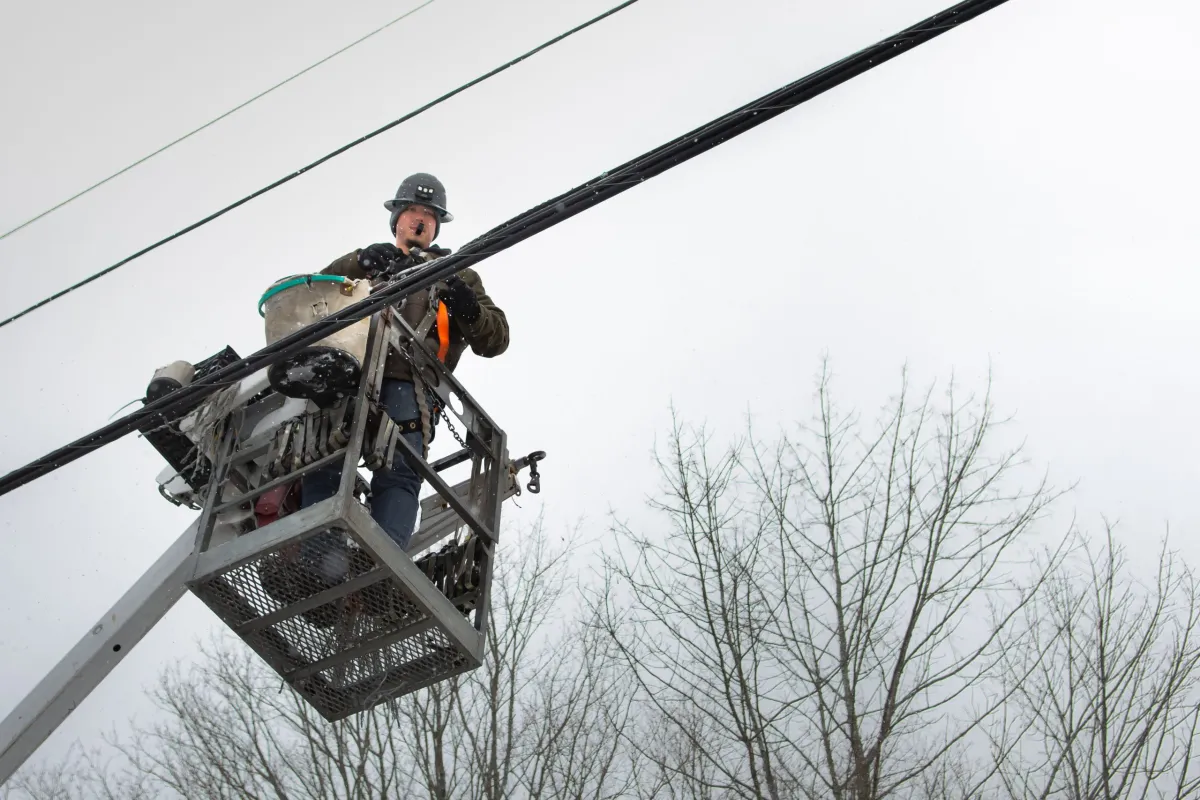One more installment on the question of whether an unloved and unsightly part of America’s infrastructure—the giant sprawl-malls that drained business from classic downtowns in the 1960s and 1970s, only to become bankrupt dinosaurs in their turn—might actually become the sites of civic and architectural rebirth.
The original post, about Fort Wayne, Indiana, was here; followed by this (partial) defense of malls; and this elaboration on what is happening to malls around the country.
More via the wisdom of the readership:
1) Maybe the deadness of the malls is a feature, not a bug. A reader points out that one mall has been put to good use as a set for horror or zombie movies:
Here’s a timely article about another use for a (largely) vacant mall:
I had remarked to a friend a couple of years ago that this mall could be used to good effect in a Walking Dead episode (which is also shot in the Atlanta area).
Of course, it’s not feasible for every city to promote/develop itself as “the Hollywood of the [REGION],” and even here the community would be better served by the space having some continuous utility, rather than occasional use as background scenery.
Perhaps, taking off from the retro film set starting point, some locale could convert an old mall to a Mall Museum, with different wings featuring now-defunct chains from different eras.
2) What did the mall designers have in mind? From a reader in California:
Not long ago, as I exited the campus environmental design library here at Berkeley I spied the free book truck outside the door. Among the books: Louis G. Redstone’s New Dimensions in Shopping Centers and Stores, published in 1973. I nabbed it, and now it’s mine. It is a treasure, not least because its target audience is the mall designer.
I am one of those kids who didn’t exactly love the mall, but very much appreciated it. New Dimensions is devoid of nostalgic sentiment; it’s a documentary history.
Of course, suburban malls like the ones I visited as a kid were also in their own ways monuments to racism and capitalist rapaciousness. We need not mourn their loss, then, except for the fact that their replacements are arguably much worse in either or both respects.
I don’t believe you noted sites like this in your recent posts. Depictions of the ruins of malls are now a “thing,” as they say. Also see this, from a Pacific NW design journal.
3. And in Jacksonville too.
When I saw your item, this had just come out in a local paper, about a mall where I was once a retail store employee:
This mall was built after I left and my parents could never understand it, because Jacksonville even at its ritziest is not this type of town.
4) Plus Austin:
Here’s another one. Highland Mall is now an Austin Community College campus.
This is the link to the architects’ page about it—it gives a good summary of how and why it was redone. Click on the link at the lower left—and scroll down too, to read about the sustainability modifications, which are cool.
Here’s the ACC page, so you can see what the transformed real estate looks like to students and visitors to the page.
5) And Seattle:
Seattle’s Northgate Mall opened in 1950 as an outdoor shopping mall. It was a cultural icon when I was growing up here. It was later enclosed to remain competitive with the newer malls—Bellevue Square and Southcenter. Even as light rail is finally being built with a stop at the mall, stores close.
There are plans for its future, which may already be known to you, but if not, here are some: this, this, this, this, this.
6) The big picture: Dead malls are a potential “land bank” for future cities. A reader who works in the urban-development business writes:
I want to highlight work being done internationally on the dying mall saga.
My firm has a segment of our practice called “Urban Places.” We are about making our built environments more inclusive, resilient, vibrant, healthy, and ecologically sound …
I know this sounds like a sales pitch. But it’s a core value I and my fellow colleagues believe in. The future is urban. Suburban spaces like malls are great land banks to create something new.
The reader recommends a fascinating report from the Urban Land Institute.
Thanks to all.




